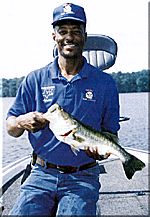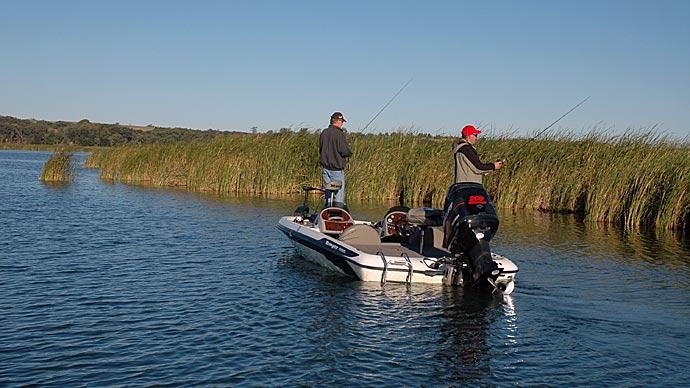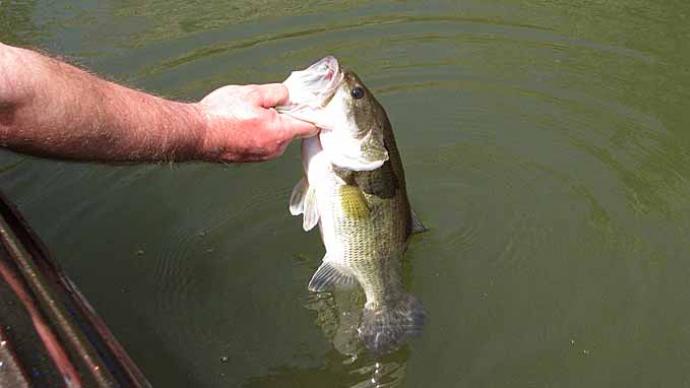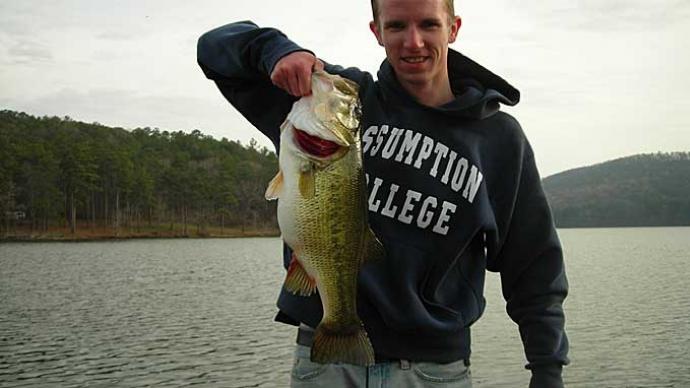
Some of the best areas on any body of water that you will visit don't look like much, but in fact, flats in all lakes harbor fish nearly every month of the year. No, I'm not talking about creeks or channels. I am talking about straightforward areas to fish, where finding the mother lode is possible, and someone else finding your fish is near impossible. Flats are super.
Whether you're fishing Needmore or Caney at Sam Rayburn, the southwest side of Wolf Island at Ray Roberts, or parking lots at Truman Reservoir in Missouri, flats offer some of the best and easiest fishing in any lake.
When most anglers think of flats, they think of shallow water, say five to 10 feet deep. Shallow is a relative term. It all depends on the lake. The flats might be 35 to 45 feet deep if the lake is known for deep-water fishing. On Possum Kingdom (Texas), five to 14 feet is more like it. On Rayburn, where the hydrilla stops, 10 to 15 feet will be the depth you should look for.
You must keep an open mind and apply this information to your home water, depending upon the season you will be fishing. You knew there would be a catch. Seasons, how deep, which flats, nothing is as easy as it sounds, right? Oh yes, it is.
The only thing you will need to know is if the lake has vegetation or not and a little information on the history of the lake. When I say information, I mean reliable depths. You probably know at what depths fish can be caught on a lake during certain months of the year, so part of your problem is already solved. You also know if there is any vegetation, what kind it is, and at what depth it stops. Oops, there goes another part of the puzzle. This only leaves you with where and what to fish with.
As far as what to fish with, you can't go wrong with a Carolina-riggedFrench Fry with a 1/8- to 1-ounce sinker, depending on the depth of water to be fished. That takes care of another part.
The last part of this equation is where. I will concentrate on this for the rest of this article and throw in some valuable tips as we go along.
First, let's determine just what a flat is. On some lakes, a flat may be a little smaller, say 50 yards long. It will have little depth change. Hence, the word flat. However, finding a flat with a depth change puts you closer to fish than you know. On other lakes, a flat may be acres and acres of the same water depth. I am going to put underwater islands and humps into this category also because these are the areas that will, at times, have numbers of fish on them.
Like a deeper area on a flat concentrate fish, so do the shallower areas. As we get started, you will have to have some electronics on your boat that will determine the hardness of the bottom. A depthfinder with a grayline feature is a must. This is the only way to determine just what is below your boat. Unless you are very familiar with the features of your unit, the best thing to do is to turn the unit on and let it operate in the automatic mode—a soft bottom registers as a thin line. The harder the bottom gets, the thicker the line depicting the bottom will get, and at times, if the bottom is very solid, you will notice another echo below the other. This is what you are looking for.
Another thing is that rocks on the bottom will appear as very thick lines, almost turning solid black between the echoes on some units. Finding rocks on a flat is almost as good as finding a sign that says, "Fish Here!"
Okay, you know what to look for, now where do you go? Main lake flat points are the best places to try first, especially if you are not familiar with the lake. You will find fish on main lake points almost throughout the year. Idle up, down, and across these points, watching your bottom echoes. A sudden depth change is what everyone will find, and chances are this area will have fish, but what you are looking for is the hardness of the bottom. You are looking for a rock pile or part of the point that is harder than the rest. You are looking for a spot on top of the flat point to find fish that are easier to catch. Fish on a drop can move out over deeper water, and catching these fish can be tricky. If a fish has moved up on a flat or point, it is because they are either committed to spawning or are hungry. This makes them easier to catch, which is what this article is about.
What did I say? Spawning? Oh yes. Your favorite lake will have spawning fish on main lake points and humps. In fact, with increasing fishing pressure during the spawn on most lakes, some of the largest fish spawn where no one fishes during the spring, out in the main lake. The top of a hump or point often has the most solid bottom of any part of that area.
For this reason, and for the most part, vegetation will not grow on top of these areas. Fishing main lake flats for spawning fish late in the spring is either one of the best-kept secrets of pros or has not caught on yet. I assure you that every lake I have been to in Texas has spawning fish on main lake flats at least a month after you think the spawn is over.
Are there flats that I do not even need to consider? Yes. When you pick up a lake map, flats are easily seen by the lack of contour lines. The farther the contour lines are apart, the flatter the bottom; this is where your homework will come into play. I told you to find the depth at which most fish are caught in a given lake. This is the depth flat you will want to find on the lake map. This flat should also be next to a structure such as a creek, tank dam, well-defined ditch, or maybe as part of a main point. The next thing to do is to find something out of the ordinary on this structure, ditch, vegetation, stump or stumps, or what I am trying to teach you to find rocks. Even the most extensive flats, like Needmore at Sam Rayburn, are littered with ditches, humps, and, most of all, scattered vegetation, but it also has its share of rock piles.
Rarely are you going to find such large expanses of flats as the ones found in Toledo Bend and Sam Rayburn, but if you do, finding the depth changes and the areas with rock or wood of some kind is the key to finding fish. You may fish Caddo, where the entire lake is a flat. On this lake, cypress trees and vegetation are the key.
As seasons progress, the fish may move to different water depths. This is not a problem. Move with the fish. Moving to different depths enables you to learn more about that area. The more you fish a specific flat, the more fish-holding objects you discover. Also, fishing flats at different times of the year will teach you the most productive times and depths to fish. This information can then be applied to other lakes.
One of the best ways to gather information about a specific area is to fish in that area. The best way to fish a flat is to drift-fish. Drifting is the art of dragging your bait with the wind, or if there is no wind, using the trolling motor to pull your bait along. Using the trolling motor, you can stay at a certain depth and control the speed at which you drift. There are times when bass will school and move on flats. But most of the time, you will look for objects holding fish. The larger the object, the more fish that object will hold. By drift-fishing Carolina rigs, you can cover a lot of water in a hurry. Drifting will also get you bites you would not usually get. By this, I mean you can throw a Carolina rig at an object and not get bit, drift past this object, and you will.
When drift-fishing, pay close attention to your depthfinder. This is how you will learn the makeup of the bottom. Pay special attention to the grayline feature as you try to find rocks and soft spots. Soft spots, you will find, do not produce, and just a half of a foot of depth change can put you in a soft bottom.
When fishing for bass still on beds, these soft spots are not what you want. Bass want a hard bottom, so you will have to find the bottom makeup to determine if fish will use an area for bedding. Eggs need sunlight to hatch, so as a general rule of thumb, fish no deeper than 18 inches deeper than you can see into the water. If the water is very clear, drifting may not be an option because of spooking the fish. At night, however, I have not found drifting over beds that I can see during the day to affect the fish.
Remember what I said about depth. It is relative to the lake you are fishing. Spawning fish are not usually found in water that deep, but in very clear water, they will be.
So take this information and apply it to your lake. Those depth finders are expensive. Use them for their intended purposes, and learn what they tell you. Fishing flats can be very addictive because of the fish you can catch. Once you learn the basics, you're off to the flats.




